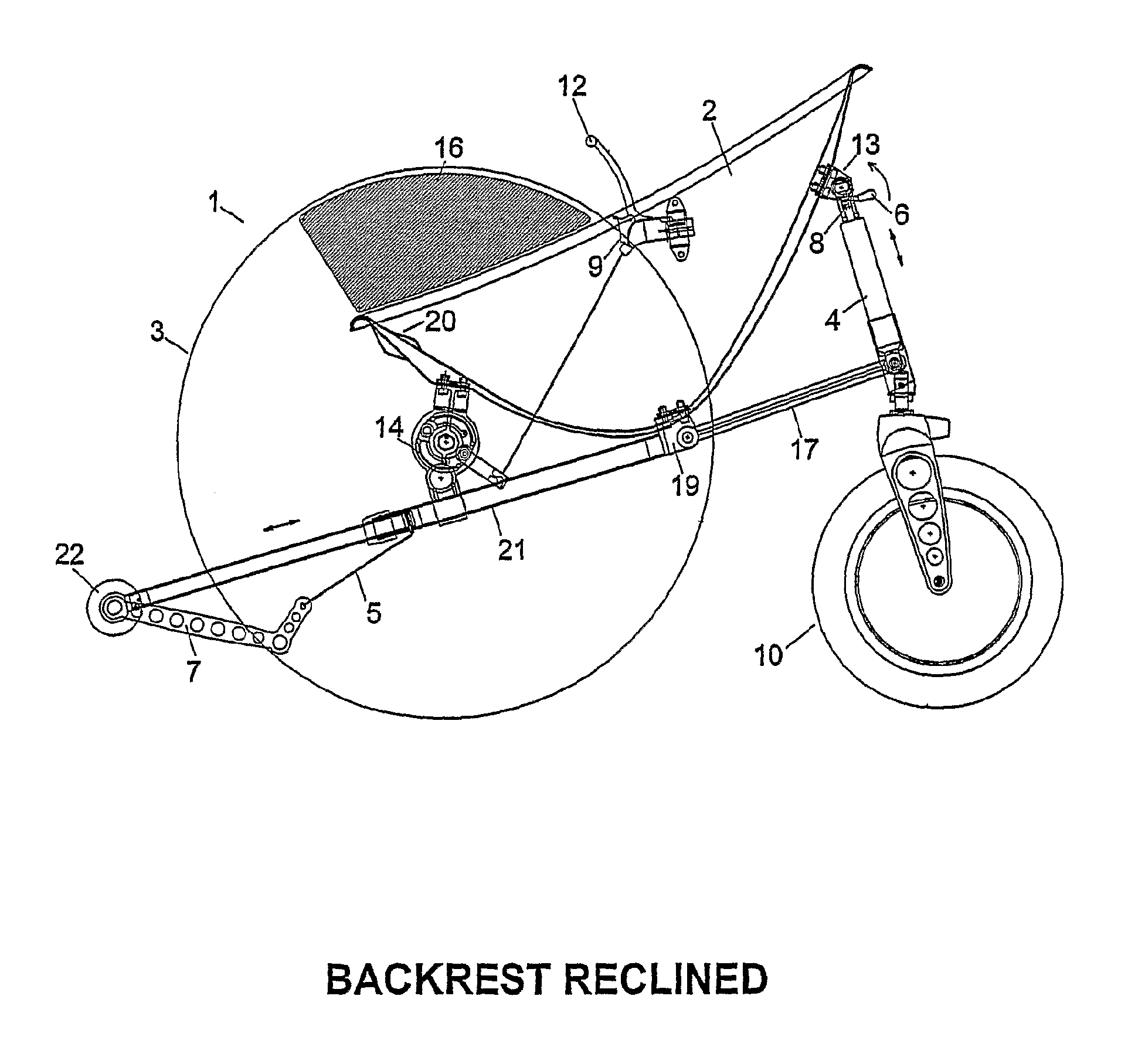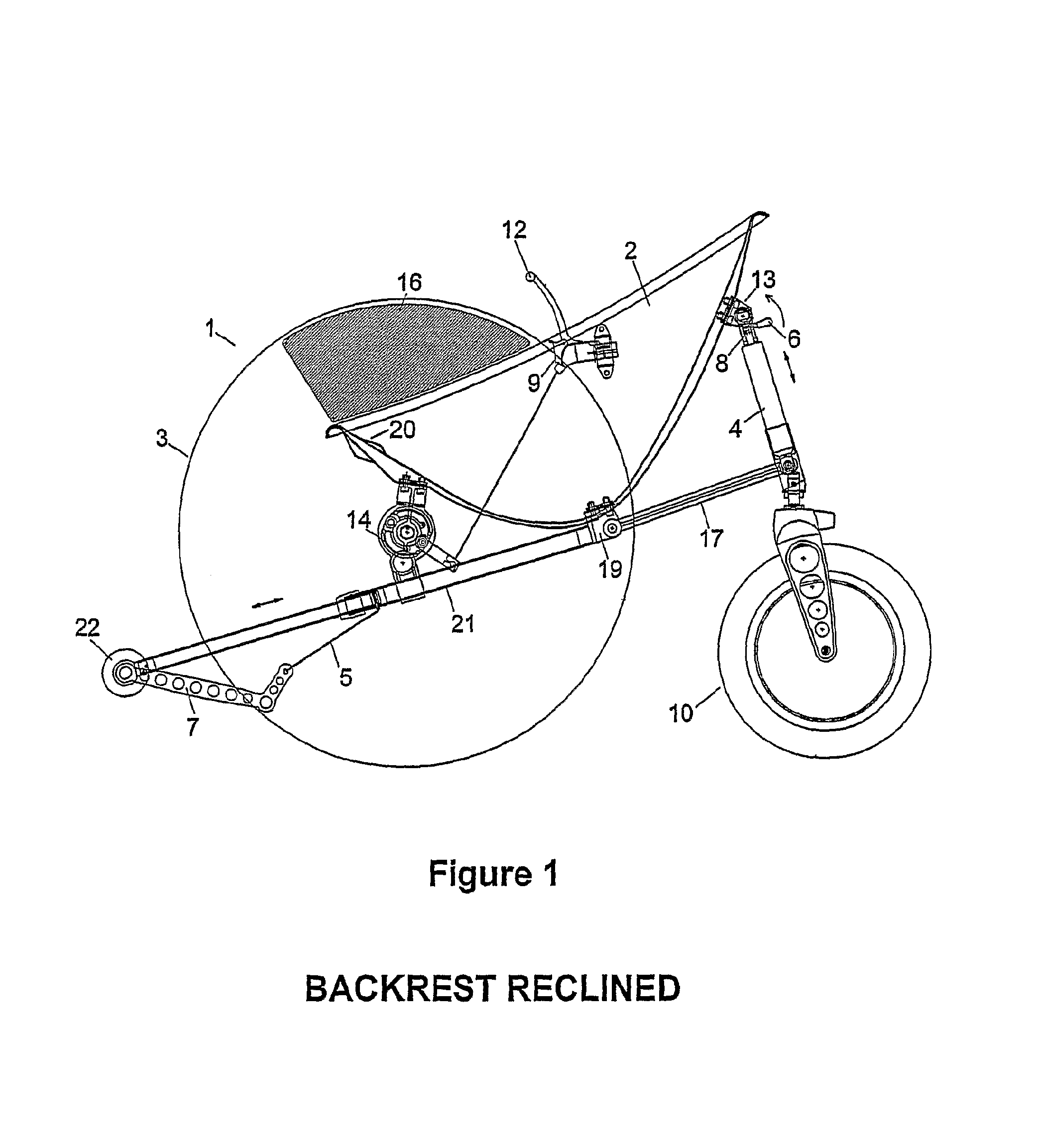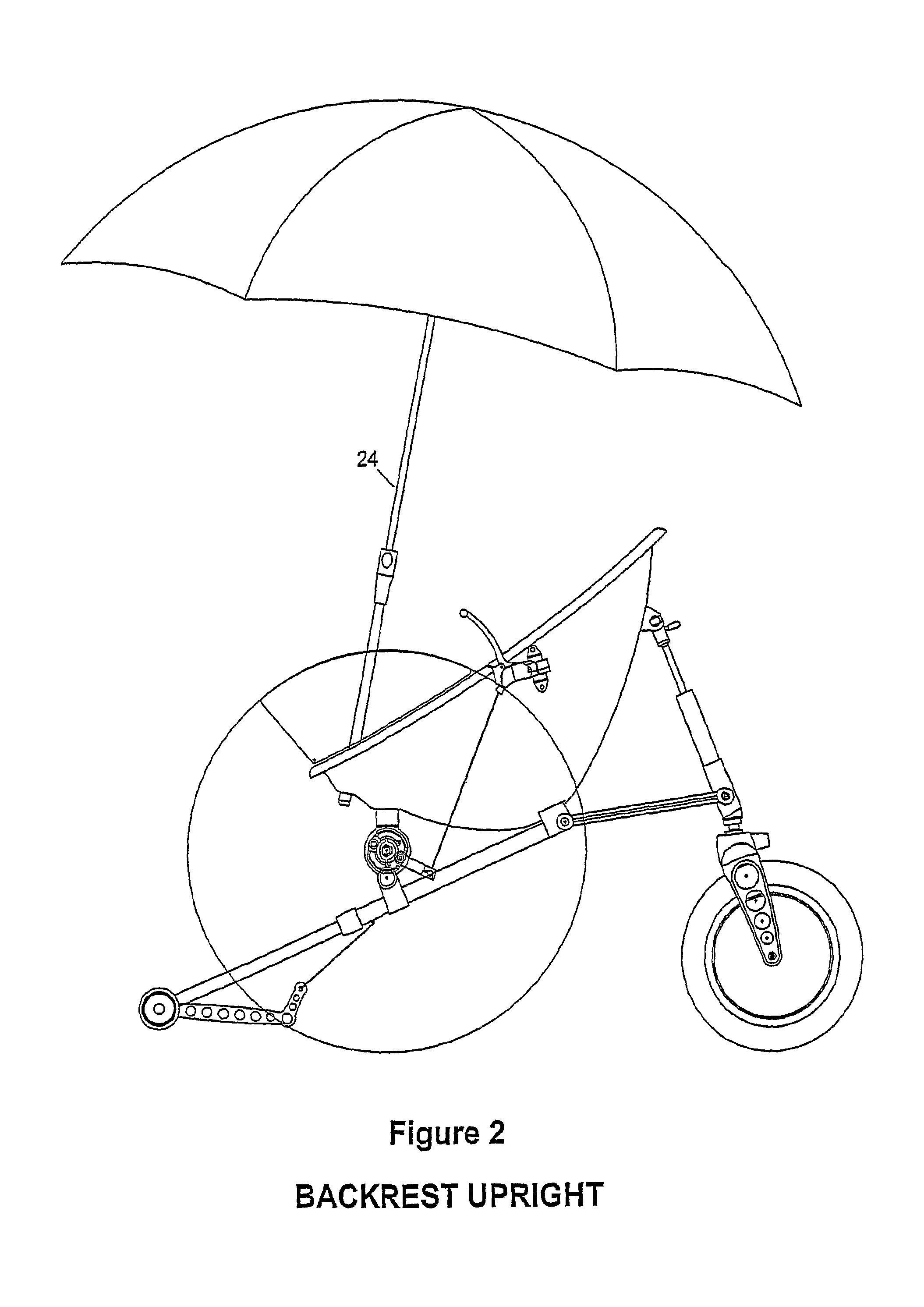Wheelchairs and wheeled vehicles devices
a technology for wheelchairs and vehicles, applied in the field of wheelchairs and wheeled vehicles, can solve the problems of conventional wheelchairs slipping backwards, unstable condition, and unsuitable smooth surfaces for wheel arrangement, and achieve the effects of reducing the restriction on angular displacement of the castor, reducing the difficulty of adjusting and reducing the inclination of the wheel
- Summary
- Abstract
- Description
- Claims
- Application Information
AI Technical Summary
Benefits of technology
Problems solved by technology
Method used
Image
Examples
Embodiment Construction
[0075]The present embodiments represent the best ways known to the applicant of putting the invention into practice. However they are not the only ways in which this can be achieved.
[0076]By way of an initial overview, the preferred embodiments provide a wheelchair or similar vehicle for personal use, comprising ground-engaging wheels and a user seat forming a structural member or monocoque on which the ground-engaging wheels are supported. The user seat may be of metal, plastics or composite material, e.g. fibre-reinforced plastics. If the seat is of plastics material, it may be in the form of a shell which may be moulded to fit the contours of the body of the user and may comprise a surrounding lip or rim to add stiffness to the structure. Alternatively or additionally, the seat may comprise stiffening ribs. The seat may comprise a single skin or may comprise inner and outer skins which may be separated and joined by a lightweight core, e.g. of rigid foam or of honeycomb material....
PUM
 Login to View More
Login to View More Abstract
Description
Claims
Application Information
 Login to View More
Login to View More - R&D
- Intellectual Property
- Life Sciences
- Materials
- Tech Scout
- Unparalleled Data Quality
- Higher Quality Content
- 60% Fewer Hallucinations
Browse by: Latest US Patents, China's latest patents, Technical Efficacy Thesaurus, Application Domain, Technology Topic, Popular Technical Reports.
© 2025 PatSnap. All rights reserved.Legal|Privacy policy|Modern Slavery Act Transparency Statement|Sitemap|About US| Contact US: help@patsnap.com



